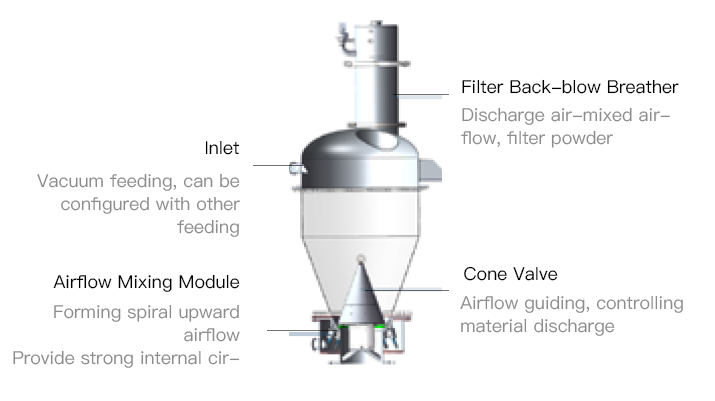



Widely used in new energy, coatings, cosmetics, food, pharmaceutical, and other industries, it is particularly suitable for large-capacity rapid mixing of lithium-ion battery cathode and anode materials, offering high production efficiency and superior mixing quality.
Widely used in new energy, coatings, cosmetics, food, pharmaceutical, and other industries, it is particularly suitable for large-capacity rapid mixing of lithium-ion battery cathode and anode materials, offering high production efficiency and superior mixing quality.
High-pressure, high-speed airflow is emitted from the nozzle, expanding and decompressing as the compressed gas rises. The central powder is continuously “lifted” by the thrust of the flow rate and the “lifting force” generated by gas expansion, then falls to the bottom along the wall due to gravity and air pressure difference. The airflow “lifts” the powder again, creating a rapid circulation mixing process. High-speed airflow also induces relative motion between powders, enhancing the mixing effect.
